We're Always Here To Help
Reach out to us through any of these support channels
Dual 8-fader sections in a space-saving console that can be used alone or cascaded to another CL console for input expansion.
| CL5 | CL3 | CL1 | ||
|---|---|---|---|---|
| Sampling frequency rate | Internal | 44.1kHz / 48kHz | 44.1kHz / 48kHz | 44.1kHz / 48kHz |
| External | 44.1kHz: +4.1667%, +0.1%, -0.1%, -4.0% (±200ppm), 48kHz: +4.1667%, +0.1%, -0.1%, -4.0% (±200ppm) | 44.1kHz: +4.1667%, +0.1%, -0.1%, -4.0% (±200ppm), 48kHz: +4.1667%, +0.1%, -0.1%, -4.0% (±200ppm) | 44.1kHz: +4.1667%, +0.1%, -0.1%, -4.0% (±200ppm), 48kHz: +4.1667%, +0.1%, -0.1%, -4.0% (±200ppm) | |
| Signal delay | Less than 2.5ms, OMNI IN to OMNI OUT, Fs=48kHz | Less than 2.5ms, OMNI IN to OMNI OUT, Fs=48kHz | Less than 2.5ms, OMNI IN to OMNI OUT, Fs=48kHz | |
| Total harmonic distortion | Less than 0.05% 20Hz-20kHz@+4dBu into 600Ω, OMNI IN to OMNI OUT, Input Gain = Min. | Less than 0.05% 20Hz-20kHz@+4dBu into 600Ω, OMNI IN to OMNI OUT, Input Gain = Min. | Less than 0.05% 20Hz-20kHz@+4dBu into 600Ω, OMNI IN to OMNI OUT, Input Gain = Min. | |
| Frequency response | +0.5, -1.5dB 20Hz-20kHz, refer to +4dBu output @1kHz, OMNI IN to OMNI OUT | +0.5, -1.5dB 20Hz-20kHz, refer to +4dBu output @1kHz, OMNI IN to OMNI OUT | +0.5, -1.5dB 20Hz-20kHz, refer to +4dBu output @1kHz, OMNI IN to OMNI OUT | |
| Dynamic range | 112dB typ.: DA Converter / 108dB typ.: OMNI IN to OMNI OUT, Input Gain = Min. | 112dB typ.: DA Converter / 108dB typ.: OMNI IN to OMNI OUT, Input Gain = Min. | 112dB typ.: DA Converter / 108dB typ.: OMNI IN to OMNI OUT, Input Gain = Min. | |
| Hum & noise level | Equivalent input noise | -128dBu typ., Equivalent Input Noise, Input Gain=Max. | -128dBu typ., Equivalent Input Noise, Input Gain=Max | -128dBu typ., Equivalent Input Noise, Input Gain=Max |
| Residual output noise | -88dBu, Residual output noise, ST master off | -88dBu, Residual output noise, ST master off | -88dBu, Residual output noise, ST master off | |
| Crosstalk | -100dB*1, adjacent OMNI IN/OMNI OUT channels, Input Gain = Min. | -100dB*1, adjacent OMNI IN/OMNI OUT channels, Input Gain = Min. | -100dB*1, adjacent OMNI IN/OMNI OUT channels, Input Gain = Min. | |
| Power requirements | US/Canada: 120V 60Hz, Japan: 100V 50/60Hz, China: 110-240V 50/60Hz, Korea: 220V 60Hz, Other: 110-240V 50/60Hz | US/Canada: 120V 60Hz, Japan: 100V 50/60Hz, China: 110-240V 50/60Hz, Korea: 220V 60Hz, Other: 110-240V 50/60Hz | US/Canada: 120V 60Hz, Japan: 100V 50/60Hz, China: 110-240V 50/60Hz, Korea: 220V 60Hz, Other: 110-240V 50/60Hz | |
| Power consumption | 170W: Internal Power Supply / 200W: Simultaneous use of Internal PSU and External PW800W | 170W: Internal Power Supply / 200W: Simultaneous use of Internal PSU and External PW800W | 170W: Internal Power Supply / 200W: Simultaneous use of Internal PSU and External PW800W | |
| Dimensions | W | 1053mm (41 1/2in) | 839mm (33 1/8in) | 648mm (25 5/8in) |
| H | 299mm (11 3/4in) | 299mm (11 3/4in) | 299mm (11 3/4in) | |
| D | 667mm (26 1/4in) | 667mm (26 1/4in) | 667mm (26 1/4in) | |
| Net weight | 36kg (79.4lb) | 29kg (63.9lb) | 24kg (52.9lb) | |
| Others | Temperature Range: Operating temperature range: 0 - 40℃, Storage temperature range: -20 - 60℃ | Temperature Range: Operating temperature range: 0 - 40℃, Storage temperature range: -20 - 60℃ | Temperature Range: Operating temperature range: 0 - 40℃, Storage temperature range: -20 - 60℃ | |

Every engineer, artist, and audience agrees that sound quality is the bottom line. That’s a given. Through thorough analysis, review, and refinement of every detail of the circuitry and technology used, Yamaha CL series consoles deliver naturally superior sound plus a comprehensive range of “coloring” options that give the sonic craftsmen who will use them extraordinary creative freedom. The signal processors provided are plentiful and of the highest quality, including extraordinary Portico 5033/5043 EQ and compressor devices that bring Yamaha VCM technology together with the legendary talents of Rupert Neve. The platform is pure and natural, so the engineer can create and deliver the ideal sound.
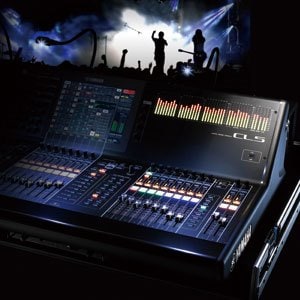
The full impact of the most advanced digital audio technology available has been applied throughout the CL series to deliver natural sound that provides a perfect foundation for the artist’s and engineer’s imagination. This type of sonic quality cannot be realized through specifications alone. Repeated listening evaluations and refinements by some of the most reliable ears and respected minds in the business are an indispensable part of the process. The CL series digital mixing consoles are proof that the time and effort involved have been well spent.
Special Interview: Kenichi Ikeda(Electrical Engineer)
The challenge begins right from the console’s inputs. In order to achieve the required level of sound quality, individual components, power supply, grounding, circuit layout, mechanical construction, and countless other details of the initial input stages must be selected and designed with the utmost care. Listening evaluation becomes an important part of the development process right from this first stage as well. Changing even a single electronic component can alter the sound in unexpected ways, and the tiniest variations must be noted and evaluated as development proceeds. Extreme measures have been taken to maximize AD and DA conversion performance as well, right down to making detailed spectral analyses of the AD/DA master clock and adjusting the FPGA clock signal routing so that the most natural, musical sound is achieved. Another critical part of any audio system is the power supply. Of course the capacity of the supply is important, but so are the types of capacitors used, and the grounding must be engineered to ensure the lowest possible impedance. The resultant sound is an eminently natural representation of the input signal, providing an ideal foundation for processing and effects that will lead to the final, polished sound.

In creating the best possible sound for a profusion of venues and artist requirements, sound engineers draw on their experience and imagination to make a multitude of practical as well as creative decisions. The engineer’s primary hands-on tool, the mixing console, must be able to accommodate them all. Of course the bottom line is sound quality, and this is just one of the areas in which the CL series consoles excel. They also feature some of the most advanced analog circuitry modeling technology available to add unprecedented character and shape to the sound as needed, while maintaining the utmost sonic quality.
Special Interview: Rupert Neve and Toshifumi Kunimoto
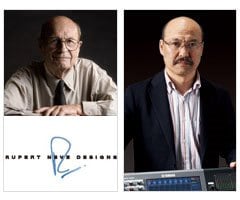
Rupert Neve is a legend. His contributions to the fields of audio recording and production began at the dawn of the era and continue to this day in the form of microphone preamplifiers, equalizers, compressors, and mixing consoles that are the gold standards of professional audio.Clearly Mr. Neve is very serious about his sound, so it’s an honor that he and his company, Rupert Neve Designs, have officially recognized Yamaha’s original VCM (Virtual Circuitry Modeling) technology as being the first of its kind that is capable of accurately modeling the rich, expressive analog sound they have championed for so long. With VCM technology, digital audio is at last capable of matching analog designs for sonic quality.VCM, developed by Toshi Kunimoto (“Dr. K”) and his team at Yamaha’s innovative “K’s Lab” division, is a circuit modeling concept that effectively simulates the most detailed characteristics of individual circuit components, right down to capacitors and resistors, resulting in astonishingly realistic circuit simulations that easily outclass conventional digital simulations. But accuracy isn’t the only consideration, musicality is essential as well, and VCM modeling delivers both.The CL series consoles come equipped with VCM models of the renowned Neve Portico 5033 equalizer and Portico 5043 compressor/limiter, both developed through close cooperation with Rupert Neve Designs. A valuable range of other VCM equalizers, compressors, and studio-quality effects is also included. You will hear the difference.

Thanks to in-depth collaboration with Dan Dugan Sound Design, renowned Dan Dugan automatic microphone mixing with its advanced algorithms is built into the CL series consoles. Setup is easy: just insert the processor into up to 16 channels for automatically optimized microphone gain distribution. Gain control is smooth and natural, as though experienced human operators were doing the mix. The system also effectively reduces feedback and comb filter issues. For speech applications, especially non-scripted situations, this allows the operator to concentrate on details other than fader operation for consistently high-quality mixes.
Dan Dugan talks about Yamaha QL series Digital Mixing Consoles

A truly useful sound reinforcement console is one that can keep pace with the rapidly and dramatically changing demands of live sound applications. Efficient, intuitive operation is essential. Yamaha’s acclaimed Centralogic concept is the core of a refined user interface that offers a new, unprecedented level of operating efficiency in the CL series, from visual feedback right down to the form and feel of the faders and controls. The CL consoles are also ready for seamlessly integrated remote control and offline editing via an Apple iPad® or other computer. Control is familiar and intuitive, while at the same time offering extensive freedom.

Yamaha’s Centralogic user interface has already proven its value as the most user-friendly digital operating environment available, even for engineers who were previously only comfortable with analog consoles. Founded solidly on Centralogic roots, the CL series takes intuitive, efficient operation to an even higher level, offering an operating experience that engineers will not only feel immediately familiar with, but will be able to grow with into the future.
Special Interview: Masaaki "Mick" Okabayashi(Engineering Manager)

Clear visual continuity from the Centralogic section’s physical faders to virtual on-screen controls via the console’s elegantly curved panel matches the unambiguous directness of analog console channel modules. Any of the console’s input and output channels can be instantly assigned to the Centralogic section in 8-channel groups.

The Selected Channel display provides a comprehensive view of the many controls and functions available for the currently selected channel. The corresponding physical controllers to the left of the display are labeled and laid out in the same way as the on-screen controls, for confident access and operation. The CL series includes a number of refinements to this now-standard interface for unprecedented operating ease.
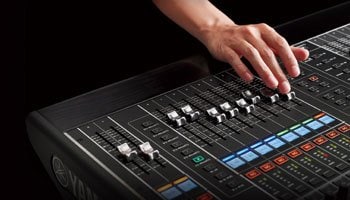
The way CL series functions and controls work together is a perfect example of how a whole can be greater than the sum of its parts. Within the larger framework of the user interface, the visibility, feel, and precision of individual faders, knobs, and switches are an essential part of the overall operating experience. The visual flow of the control layout across the consoles’ sweeping curves makes a significant contribution to smooth operation as well. The outstanding balance of the entire system, plus refinements such as programmable channel names/colors and user defined knobs, add up to operation that is, in a word, sublime.
Special Interview: Masafumi Ito(Product Designer)

No detail of form or function has been overlooked, right down to how the curvature of the elegant fader knobs comfortably fit the fingers at any angle. The fader knobs even have non-slip inserts that provide ideal friction for smooth, slip-free fades. Visibility is important too, so the knob edges are sculpted to provide a clear view of the fader scale from just about any angle.
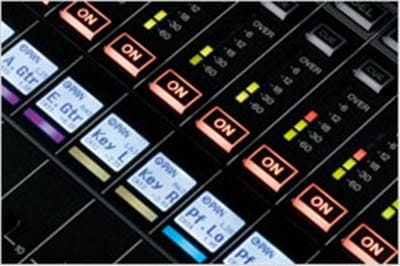
Editable channel name displays above each fader automatically switch to a larger character size for short names, and show pan and fader values as well. Below each channel name display is a color bar that illuminates in any of eight selectable colors, the same as those used in the central touch screen, for at-a-glance channel and group identification. Brightness can be adjusted for optimum visibility under any ambient lighting conditions.
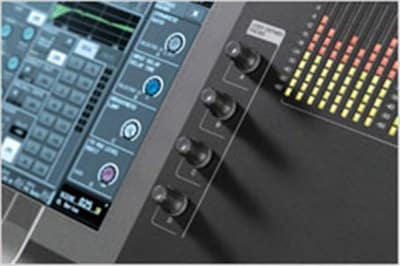
The User Defined Keys provided on Yamaha digital consoles are already a standard. The User Defined Knobs provided on the CL series consoles will quickly achieve the same status. Just about any of the console’s variable parameters can be assigned to the four User Defined Knobs for direct, instant access. Another advanced control feature is Custom Fader Bank selection, allowing the faders in each section to be instantly reordered as required.
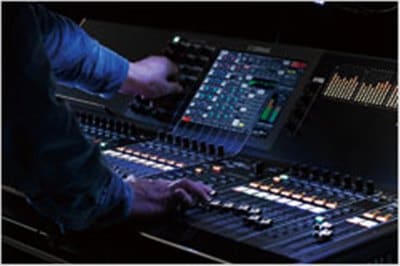
The sweeping form of the CL consoles is not only elegant, but it provides the best possible view of all controls and displays from the operator's position. The visual continuity from the Centralogic faders to the display is seamless. The hand rest is genuine oak with a gorgeous finish that matches the visual and tactile sophistication of the overall design.

Network capabilities are rapidly becoming fundamental and indispensable in today’s fast-paced world of digital live sound. CL series consoles feature separate console and I/O rack components that communicate via the Dante™ network audio protocol, allowing fast, efficient design and deployment of capable systems from the most basic to the dazzlingly complex. The ability to add Lake® processing via expansion slots also adds to the system’s versatility and adaptability to the widest range of mixing needs.
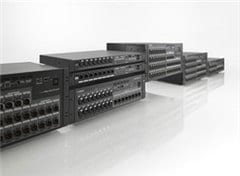
The complexity and variety of today’s live sound systems makes fast, adaptable configuration and setup capability vital. Of course the highest level of sonic performance must be maintained at the same time. CL series consoles use the Dante network protocol developed by Audinate to allow flexible connection to multiple I/O rack units configured and located according to the needs of the application, while at the same time providing redundancy for superior reliability.
Easy and flexible system setup with Dante
Gain Compensation: Advanced
Gain Compensation: Practical Applications
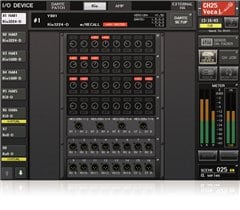
Dante directly supports star network configurations, so up to eight I/O rack units can be connected to any single CL series console and conveniently located wherever they are needed most. A few simple DIP switch settings are all that is required to change to daisy-chain networking as required.

The ability to set up even complex systems quickly and easily is another benefit of Dante networking. In most cases devices on the network are recognized and set up automatically. And since patching operations that usually require a separate computer can be carried out directly from the CL console, changes to the initial setup are painless as well.
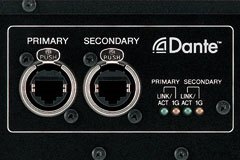
Dante also makes it easy to maximize system reliability. Star networks allow the use of redundant primary and secondary lines for each device, for the utmost reliability in critical applications. With this type of setup a malfunction in a cable or other network component won’t bring the whole system down. The show will go on.
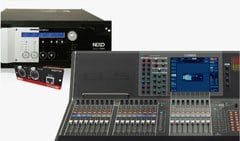
Here's a case where Dante offers not only extended system flexibility, but enhanced operability as well. NEXO NXAMP discovery and patching operations that normally require a computer running the Dante Controller software application can now be carried out directly from the CL console touch screen display when the NXDT104 Dante network card is installed.
* CL firmware version 1.5 or higher required.
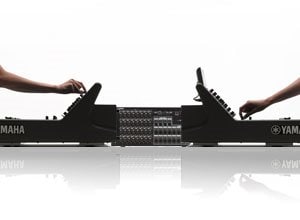
Multiple CL series consoles can share control of the same I/O rack unit, allowing unprecedented system flexibility and efficient use of system resources. A new Gain Compensation function adds the ability to combine FOH and monitor control via a single network, for comprehensive digital live sound integration.
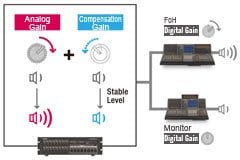
One obvious drawback of connecting multiple consoles to a single I/O rack unit is that gain adjustments made from one console can cause unexpected gain changes at the other consoles. The Gain Compensation function implemented in the CL consoles ensures that when the analog gain stage is adjusted from one of the consoles, corresponding compensation is automatically applied at the digital stage so that the level sent from the I/O rack unit to the connected CL consoles remains constant.

Gain compensation applied after any initial analog gain levels are set is carried out entirely in the digital domain. Digital gain control is another original CL series feature that contributes to extraordinarily smooth, efficient operation and integration of the entire system.

The quality and variety of internal effects have become major factors in choosing a digital live sound console. Studio quality sound is a must, but so is having the right processors for the job at hand. CL series consoles feature virtual effect racks that are packed with a selection of effects that have been chosen and developed to meet the real-world needs of live sound professionals. Everything you need to create perfectly polished sound for your application is right here.

As the name implies, “virtual racks” provided in the CL series consoles let you combine signal processors you need for your application in one easily accessible location, much like traditional analog outboard racks. The new CL series Premium Rack can accommodate up to eight instances of the six expressive EQ and dynamics effects provided, including the Rupert Neve Designs Portico 5033 equalizer and Portico 5043 compressor/limiter. The ability to use some of the most highly regarded studio effects in live mixes can help you deliver unprecedented sonic quality in any venue.

In addition to the Premium Rack described above, the CL consoles feature an Effect Rack that allows simultaneous use of up to 8 effects from a selection of 46 ambience effects and 8 insertion effects, all of outstanding quality. Although a separate EQ rack is provided for the output buses, any of the 8 effects in the Effect Rack can be replaced by graphic EQ units as needed.
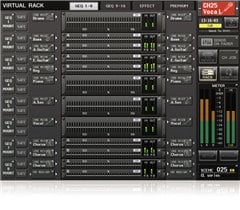
The CL consoles also feature a GEQ rack that allows graphic EQ to be inserted into the output buses as required for room equalization and other functions. Up to 16 31-band GEQ units can be mounted in the rack for simultaneous use, and those GEQ units can be individually switched to Flex15GEQ mode, effectively providing two EQ channels that allow up to 15 bands to be used at a time. With a full rack of GEQ units all functioning in Flex15GEQ mode, you have a total of 32 GEQ channels for extensive equalization capacity.
VCM technology delivers refined, musical tonality in the outstanding lineup of devices provided in the CL series Premium Rack and Effect Rack.
Portico 5033/5043: These devices immaculately model the full sonic depth and breadth of the original analog equalizer and compressor/limiter modules by Rupert Neve. They are not only ideal for adding first-class studio-quality processor sound to your mix, but are also remarkably easy to set up for optimum effect. Merely inserting these outstanding models in the signal path can enhance the sound.
U76: A studio standard that is ideal for a wide range of applications. It even features a RATIO “ALL” button that simulates the effect of engaging all of the ratio buttons on the original.
Opt-2A: This is a model of one of the most widely used optical studio compressors from the 1960’s. The distinctive and highly regarded compression and release characteristics of the original are recreated with remarkable precision.
EQ-1A: The classic studio equalizer that is the basis for this model is still in demand today, highly prized for the musical response of its vacuum tube and transformer EQ circuitry, as well as its distinctive boost/cut characteristics.
Dynamic EQ: This original EQ module detects level variations in specified frequency bands in real time, dynamically adjusting EQ gain to provide pinpoint compression, limiting, and de-essing. A refined interface contributes to fast, easy operation.
Buss Comp 369: The K's Lab team has created an accurate VCM (Virtual Circuitry Modeling) model of an acclaimed buss compressor that is relied on in broadcast and recording studios around the world. As the name implies, Buss Comp 369 is ideal for inserting on the stereo mix buss for increased loudness, more uniform levels, and warm overall sound. It is an excellent choice for live sound as well as broadcast applications.
MBC4 Multiband Compressor: The MBC4 is a four-band multiband compressor for the console's Premium Rack, combining a refined GUI with advanced VCM modeling for high overall operability and sonic performance. The musical response of highly regarded analog compressors was studied in depth and recreated in detail in the MBC4, providing flexible dynamics processing while retaining the integrity and musicality of the source.

Comp 276: This model is a composite of several analog compressors that were popular in recording studios in the 70’s. Anyone who is familiar with the originals will recognize the characteristic punch and fatness this device delivers.
Open Deck: Here’s a unique effect that models both the analog circuitry of well-known professional tape decks plus the characteristics of the tape used with them. You can simply choose a deck that offers the sound you need, or combine different recording and playback decks for a range of useful variations.
Comp 260: The compressor/limiter modeled in this device was all the rage in the late 70’s, featuring solid-state RMS level detection circuitry and VCAs for level control. The sonic signature of this model is unmistakable.
EQ 601: For a sweet analog EQ sound, this model recreates a popular circuit topology from the 70’s.

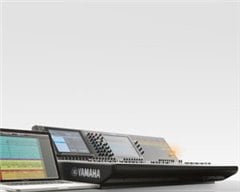
CL series consoles offer two live recording solutions: convenient 2-track recording direct to USB memory, and high-performance multitrack recording to a digital audio workstation via Dante. Whether it’s for a simple web upload, a commercial release, or just material to be used for a virtual sound check the next day, you have all the recording capability you need.
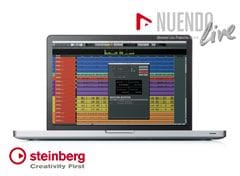
The Nuendo Live* DAW application has been specifically designed for live multitrack recording, providing comprehensive control and overview for smooth operation under the most demanding live situations. An extension plug-in provides seamless integration with CL console features, such as channel names, markers, transport control, and more
Dante Virtual Soundcard : Dante Virtual SoundcardDante Virtual Soundcard software, included with CL consoles and Rio3224-D/Rio1608-D I/O racks, enables direct multitrack recording to a Windows or Mac based DAW without the need for an audio interface between the console and computer. A high-performance DAW application such as Steinberg Nuendo Live* can be used to record up to 64 tracks with studio quality and editing capabilities.
Virtual Sound Check : DAW playback can be instantly patched to the CL console’s input channels so that multitrack recordings can be used for “virtual” sound checks when the performers aren’t available. Recordings of the previous day’s performance can be used for sound check on the following day!
*Nuendo Live is not bundled in some areas.

2-track recording in mp3 format couldn’t be easier. Simply plug a USB memory into the USB connector on the front panel of the console and start recording. No other equipment is required. Of course playback from the USB memory is possible as well, making it a convenient source for BGM or sound effects.
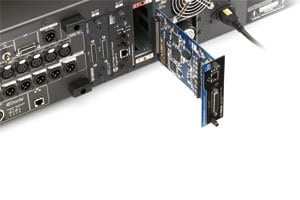
Three Mini-YGDAI card slots on the CL consoles provide easy I/O expansion as well as extra processing capabilities. New additions to the expansion card lineup include an MY8-LAKE card that integrates Lake Processing, a staple in today’s live sound field, into the console, and a Dugan-MY16 card that adds the most advanced automated microphone cueing and gain control available.
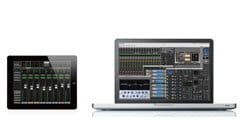
With the CL StageMix application, an iPad becomes a wireless remote controller that can be used to set up and operate CL consoles from anywhere on stage or in the audience seating area. There’s even a built-in iPad stay on the CL5 and CL3 panels, providing a convenient mount for an iPad to be used for additional control functionality. There’s also the CL Editor application for computers running Windows or Mac operating systems, for both extended online operation and offline setup and editing. In addition to full Selected Channel and Overview display operation, the CL Editor facilitates scene data management, patch list editing, channel name editing, and much more. It’s even possible to use the CL StageMix and CL Editor applications at the same time.

No specialized programming skills are required. An intuitive interface makes it easy to create faders for volume control and switches for channel on/off, for example, and position photographs or other graphic elements on the tablet screen as required to create original control panels that are ideally suited to individual applications and users. In addition, ProVisionaire Touch and ProVisionaire Control can control CL/QL/TF series digital mixers, MTX and MRX series processors, XMV series and PC-D/PC-DI series power amplifiers, R series (ADDA) and Tio1608-D I/O rack, DZR-D series powered loudspeakers and DXS XLF-D powered subwoofers and Nexo NXAMPmk2 powered TD controller. It is easy to combine those parameters onto the one screen.